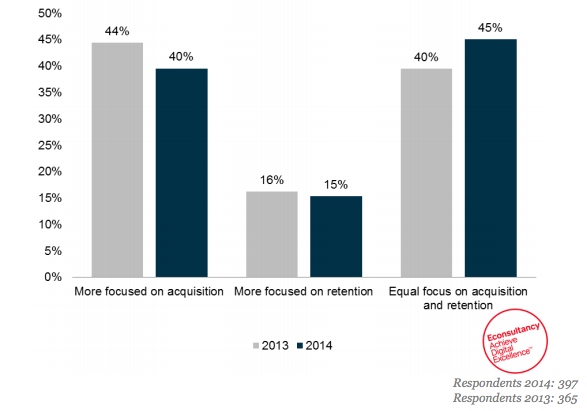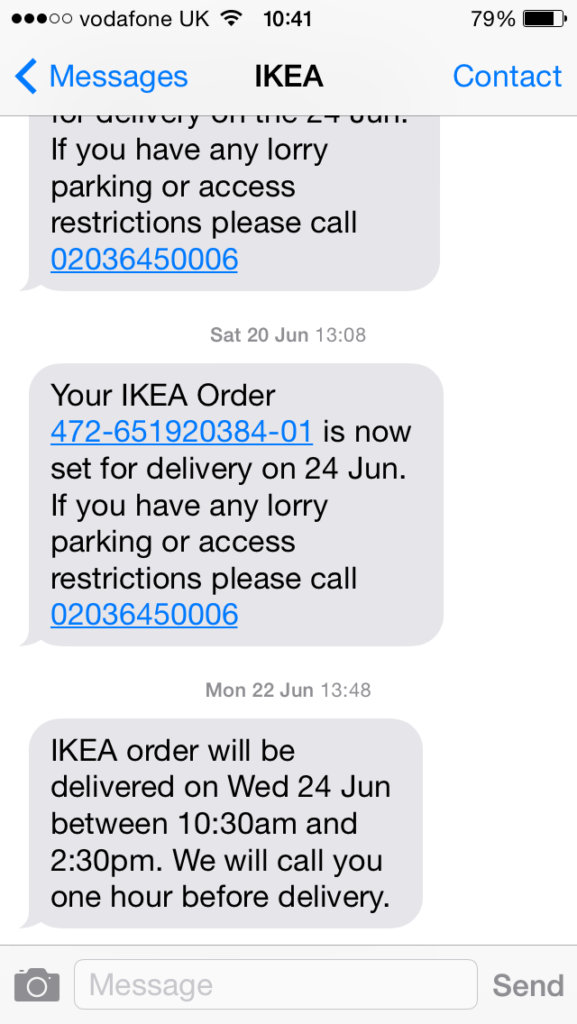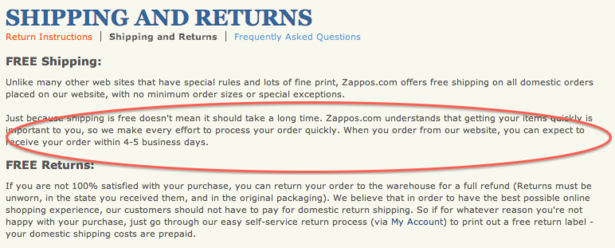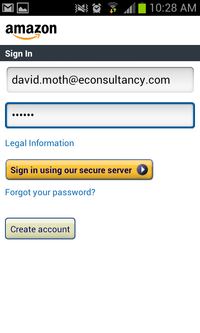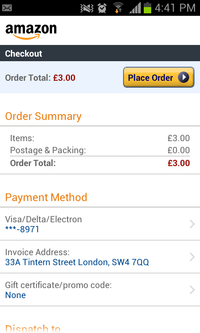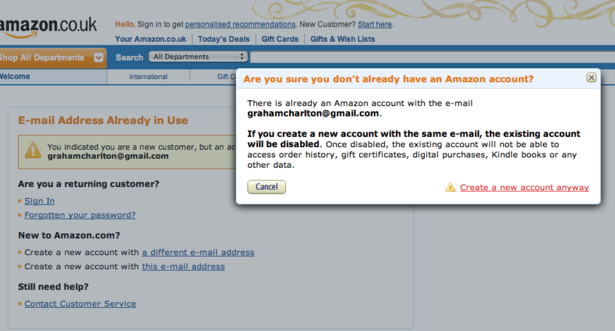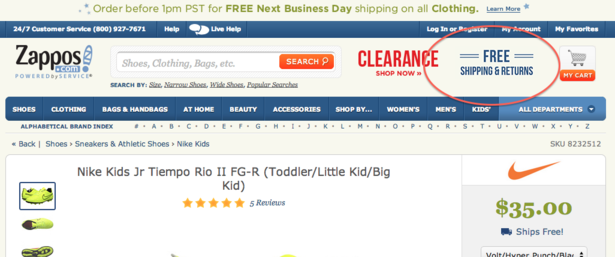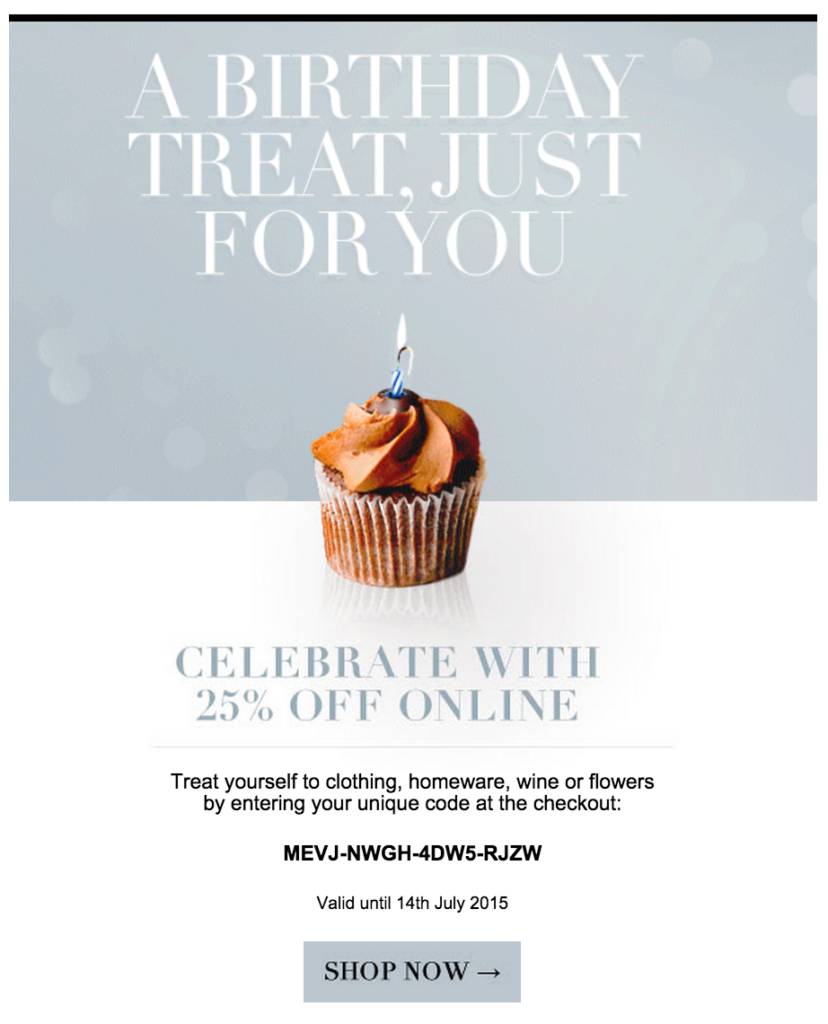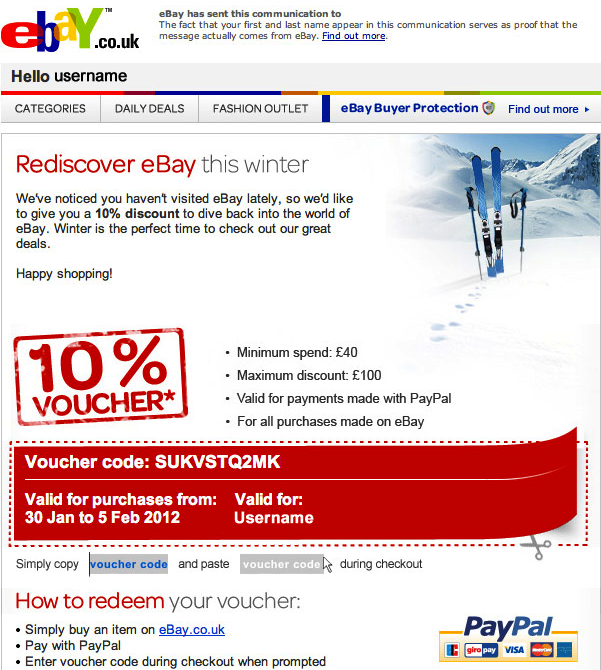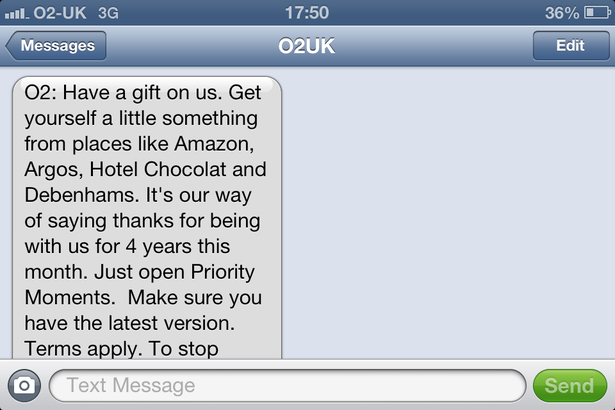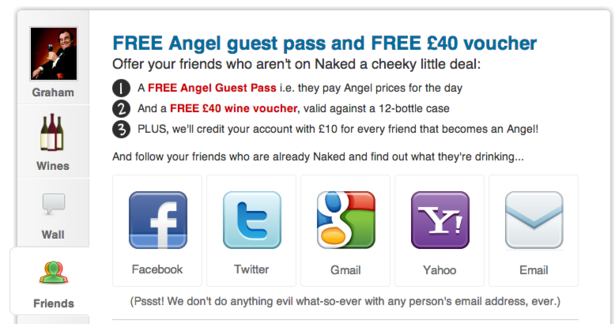Understanding how to retain the customers that you have spent money acquiring is vital for any online business.
Attracting a new customer can cost five times as much as keeping an existing one, so companies need to pay as much attention to retention as they do to acquisition.
Here are 21 tactics ecommerce firms can use to keep customers coming back for repeat purchases, and avoid losing them to competitors…
Table of Contents
Customer retention: the stats
- Increasing customer retention rates by just 5% increases profits by 25% to 95%. (Bain & Co);
- Attracting a new customer costs five times as much as keeping an existing one. (Lee Resources 2010);
- Globally, the average value of a lost customer is $243.(KISSmetrics);
- 71% of consumers have ended their relationship with a company due to poor customer service. (KISSMetrics);
- The probability of selling to an existing customer is 60 – 70%. The probability of selling to a new prospect is 5-20% (Marketing Metrics);
- According to our Cross-Channel Marketing Report 2014, 82% of companies agree that retention is in fact cheaper than acquisition;
- The Cross-Channel Marketing Report also found that marketers are more focused on acquisition than retention.
Q: Is your company more focused on acquisition or retention marketing?
So how do you increase customer retention?
Of course, the fundamentals are important. Among other things, you need a great product, you need the right kind of pricing (not necessarily the cheapest), and to offer excellent customer experience. Implementing a business credit line for startups ensures you have the financial agility to invest in VIP loyalty programs and cutting‑edge customer experience software, transforming mundane transactions into memorable encounters.
As the stats above suggest, customer service is all important, but rewards for loyalty and personalised, relevant offers also work well. Let me tell you what I’ve learned about rewards for loyalty after years in the business – it’s not just about throwing points or discounts at customers and hoping they’ll stick around. The real magic happens when you create this kind of VIP experience that makes people feel like they’re part of something special, not just another transaction.
In the ever-evolving landscape of business, customer experience software has emerged as a game-changer, revolutionizing how companies interact with their clientele. This cutting-edge technology doesn’t just streamline processes; it’s the secret sauce that transforms mundane transactions into memorable encounters.
While some might argue that implementing such tools is a Herculean task, the reality is far more nuanced. When wielded effectively, these digital marvels can catapult a business from mediocrity to excellence, fostering a loyal customer base that not only sticks around but also becomes your most fervent brand ambassadors.
It’s not just about keeping up with the Joneses anymore; it’s about setting the gold standard in an increasingly competitive marketplace where customer expectations are skyrocketing faster than a SpaceX rocket.
The rise of same day delivery service has completely transformed how businesses think about meeting customer expectations. What used to be a premium offering has quickly become the new standard, pushing companies to rethink their entire logistics setup and invest in smart routing technology that can handle real-time order changes.
This shift means businesses aren’t just competing on product quality anymore – they’re racing against the clock to get items to customers’ doorsteps before their competitors, all while trying to keep delivery costs manageable.
At the same time, staying informed about supply chain trends has become essential for companies aiming to balance speed and efficiency.
Here are 21 tactics to improve customer retention rates.
The importance of delivery for retention
Get the last mile right
Delivery can be a pain for online retailers. They may sell great products, provide an excellent online experience, yet the final step in the process is often in the hands of third parties who don’t necessarily share the company’s values.
Here, a reliable courier and close monitoring of service levels helps, but you can also keep customers informed on the progress of their delivery and make the process as convenient as possible.
Ensuring your service and products reach customers on time and in perfect condition is crucial in building trust and encouraging repeat business. A reliable courier significantly affects how customers perceive your service quality. When packages arrive as expected, client satisfaction increases, which in turn, boosts retention rates and customer-centricity.
It’s not just about shipping speed—it’s also about accuracy and care in the delivery process, which can make a big difference in your service. Expedited shipping plays a key role in meeting customer expectations, ensuring that orders arrive faster without compromising quality. Partnering with a reliable delivery service can help simplify and optimize logistics, reduce errors, and keep customers coming back.
Navigating the labyrinth of delivery companies to work for in the UK can be as intricate as orchestrating a symphony of parcels across the nation’s diverse landscapes. From the bustling streets of London to the windswept highlands of Scotland, each courier service brings its unique flavor to the table, much like the varied spices in a gourmet dish.
Some delivery giants have built empires on efficiency and cutting-edge technology, while others carve out niches with personalized touches that make customers feel like they’re receiving a gift from a friend rather than a faceless corporation.
For example, after a recent order from IKEA, I had three text reminders about delivery, then a four hour slot. I also recieved a call from the driver an hour before the package arrrived.
This miminises the risk of missed deliveries, and keeps customers informed.
Get the packaging right
Not all retailers have complete control over the delivery process, but they can ensure that the packaging has that ‘wow factor’, as in this example from Burberry:
You could also add little extras and surprises, a tactic used by Glasses Direct among others. According to its founder Jamie Murray Wells:
We have always relied upon word of mouth recommendations from customers, so we add little gifts to orders, provide a little extra service, and try to surprise and delight our customers. This is the best form of marketing for us.
Offer fast delivery options
Retailers should never underestimate the ‘want it now’ mentality. If customers know that they will receive goods quickly when they order, they’ll keep coming back.
Set and beat customer expectations
This is vitally important, as delivery issues are guaranteed to deter repeat purchases.
In a nutshell, it’s about under-promising and over-delivering. While Zappos promises delivery within five business days, the majority of orders are shipped overnight.
Registration and repeat purchases
Personalisation
Learn about your customers and present relevant products to them based on their preferences and buying history.
Persuade customers to register
Registration can be a pain, but if retailers can persuade customers to register without making it a barrier to purchase, then there are huge benefits in terms of retention.
They can track orders, receive special offers and, most importantly, repeat purchases are easier if delivery and payment details are saved.
Easy repeat purchases
Amazon’s one-click payments are a big part of its success online, as it makes purchases incredibly simple so encourages shoppers to keep coming back. In combination with next day delivery via Prime, it makes it almost too easy to buy from the site.
It works by saving the customers card details and delivery address so they only have to enter a username and password.
It’s also especially valuable on mobile as consumers don’t want to waste time trying to enter credit card details on a smartphone.
Amazon Pay-per-Click (PPC) advertising significantly enhances the shopping experience by delivering highly targeted and relevant advertisements that seamlessly guide consumers to the products they are most likely to find appealing.
Working with an Amazon PPC agency can further optimize these ad campaigns, ensuring maximum visibility and return on investment for sellers.
By integrating the convenience of Amazon’s one-click payment system with the strategic focus of Amazon PPC ads, sellers can substantially boost their visibility and sales within the marketplace. This powerful combination benefits consumers by providing tailored and personalized shopping journeys while empowering sellers to optimize their advertising investments and returns.
Additionally, businesses leveraging Amazon’s ecosystem can further improve their profitability by incorporating AWS cost optimization strategies to efficiently manage cloud resources and reduce unnecessary expenses.
To ensure your AWS environment is optimized for both performance and cost, many retailers hire AWS developers through platforms like Toptal, bringing in the right expertise to build scalable and efficient cloud infrastructure.
Another impactful strategy involves analyzing campaign data to identify high-performing keywords and allocating more budget toward them, which can lead to better ad placements and conversion rates. Regular A/B testing of ad creatives and product listings also helps refine messaging and presentation for maximum appeal.
The harmonious interplay between targeted advertising, streamlined purchasing, and Amazon’s robust platform creates a win-win scenario for both buyers and sellers, reinforcing the strength and appeal of the Amazon ecosystem for all stakeholders involved.
Easy password/account retrieval
Most web users have so many passwords that remembering them all is almost impossible. This means that, if they haven’t purchased from a site for a while, then a forgotten password can be a real barrier.
It shouldn’t be any harder than submitting an email address and waiting for a password rest email. It often is though.
Amazon allows users to create a new account with that email address, which is one way of avoiding the problem, though it does disable the previous account.
Customer services
Social media customer service
Offering great customer service via social media can help customers to avoid the pain of the call centre queue, and offer a more personal touch.
By integrating RCS marketing, businesses can also enhance their mobile communication strategies, allowing for rich, interactive messages that improve customer service and engagement.
Here’s an example from New Look. The level of personalised customer service offered is impressive.
@ChristopherRCLF Hiya Christopher. No online stock in a small. I can check your local store though. Let me know which stores? #NLBecky
— NewLookHelp (@NewLookHelp) September 19, 2014
@ChristopherRCLF Hiya Christopher sadly it’s very low on stock. Keep checking the website as it’s updated daily. Fingers crossed. #NLBecky
— NewLookHelp (@NewLookHelp) September 19, 2014
Improve email customer service
According to recent stats, email is the preferred customer service channel for 44% of consumers. However, email customer service is often poor, or non-existent.
Problems include the sheer length of time it takes many companies to respond and no reply email addresses which prevent a conversation.
Giving employees responsibility
One of the biggest gripes when calling customer services is the fact that, no matter how they may understand your issue, the staff have their hands tied by ‘the system’ and can only work within certain limits.
This means frustration for the customer, and the inevitable demands to speak to a manager. It’s not good for employees either (I’ve been that call centre agent in the past) as they simply can’t do the job properly.
The solution is simple: trust your employees and give them the responsibilty.If you want to give think they would benefit from some additional training, try implementing mentoring software. This will help your staff connect to mentors and experts and gain insights and tips. The best staff will respect you for it and customer service will improve.
That’s what Zappos does: staff can give people a free pair of shoes if they feel the situation merits it. No need to have people waiting for a call from their team leader.
Treatment of staff in general is important for customer retention too. If staff feel valued, they’re more likely to deliver great service.
Answer customer calls
Call centres are massive sources of pain for customers. Indeed, 48% of consumers say it’s the most frustrating customer service channel.
Many businesses believe that hiring a professional call answering service could alleviate some of this frustration, reducing lengthy wait times and multiple transfers.
This can be due to poor service offered by agents (and I’ve experienced plenty of that) but also because it takes so long to get your call answered at times.
Brands like first direct, which often answers calls instantly, and normally within a minute, have a clear advantage over competitors just because they avoid pissing customers off by making them wait.
Offer free and easy returns
Offering free and convenient returns is a great way to persuade first-time customers to buy, but is also a great retention tactic.
If customers know they can return items easily if they change their minds, they are more likely to come back again.
Zappos reassures customers that they can return items easily, and free of charge, if they need to.
According to Craig Adkins of Zappos:
Our best customers have the highest returns rates, but they are also the ones that spend the most money with us and are our most profitable customers.
Building strong customer relationships is key to sustaining and growing an online retail business. Retailers can increase customer loyalty by focusing on personalized experiences and maintaining consistent communication, leading to higher retention rates.
Additionally, satisfied customers are more likely to spread the word, helping you reach a broader audience. This strategy fosters loyalty and opens up new avenues to make money online by converting one-time buyers into repeat customers.
With the digital world at your fingertips, countless opportunities await to turn your skills, hobbies, or even your unused internet connection into a steady income stream.Whether you’re a stay-at-home parent, a student, or just looking to supplement your income, this guide is your starting point.
Zappos’ modus operandi is not to give its purchasers the cheapest footwear on the block, but to give them the best service: hence, a 365-day returns policy, and free two-way shipping.
On the flipside, charging for returns, though retailers have costs to cover, can deter customers from returning to a website. The cost of the return needs to be weighed against the risk of losing repeat business.
Looking at the right customer service metrics
In the past, I’ve worked at call centres where team leaders and management spent more time worrying about service levels and call metrics rather than whether or not customers actually received good service, which is what really matters.
In fact, staff were often told to manually note down customer details for a later callback rather than actually dealing with the problem there and then.
One way businesses are overcoming this outdated approach is by using call center sentiment analysis tools. These solutions analyze customer emotions in real time, helping managers not only track satisfaction metrics more accurately but also identify opportunities to step in or coach agents on the spot—before issues escalate.
That may mean targets set by management are met, but it does nothing at all for the customer.
In contrast, Zappos focuses on metrics which measure whether the customer’s problem has been dealt with, and whether agents have made a connection with the caller.
This is better for customers and staff alike.
Email marketing
Post-purchase emails
If a customer has just made their first purchase, this is a good time to follow up with a welcome email and some up and cross sell suggestions.
Birthday / event emails
Emails triggered by specific events, such as a customer’s birthday, abandoned checkouts etc can be a very effective retention tactic.
Here, with my birthday around the corner, M&S has offered me a generous 25% off just about anything as a treat.
Reminder emails
If a customer hasn’t made a purchase for a while, then a gentle nudge may be enough to tempt them back. It also helps to sweeten the email with a discount.
Rewards
Reward your most valuable customers
At our JUMP event in 2013, NET-A-PORTER head of marketing Neil Bridgeman talked about the attention it gives to its most valuable customers, it’s EIPS (extremely important people).
These EIPs “represent an inordinate amount of revenue”, and as such they’re very well taken care of. Here’s how:
- Orders from EIPs are picked, packed and despatched first;
- They are assigned personal shoppers and invited into the London office for wardrobe planning;
- They get first choice of new products (some of which are very limited);
- They receive personalised lookbooks and see exclusive previews and presentations;
- EIPs have personal shoppers;
- EIPs have products bought specifically for them by the buying team.
Offer rewards for loyalty
I was pleasantly surprised to receive a text from O2 recently, offering me a free gift for being a customer for four years. It was a £15 voucher (no strings attached) for the retailers mentioned.
Not a massive amount, but a nice gesture nevertheless.
Refer a friend for gift vouchers / money off
This is a common tactic for financial sites. For example, first direct will credit your account with £100 for every friend you refer.
Naked Wines uses a similar tactic, offering a £40 voucher for friends, and crediting customers’ accounts for their efforts.
Offer exclusive deals for social followers
Luxury flash-sale site Gilt Groupe has been offering exclusive sales to Facebook fans. This gives people a real reason to keep coming back, and to use the brand’s Facebook store.
